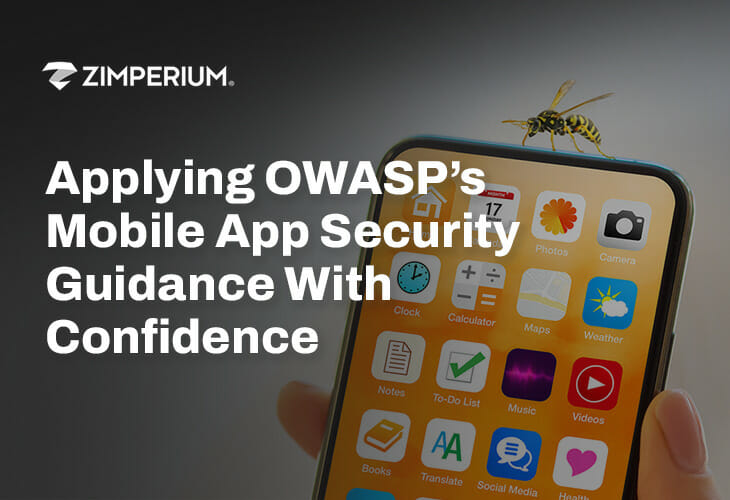
Mobile app security checklists are systematic and organized lists of security considerations, best practices, and measures that developers, IT security teams, and other stakeholders should follow or verify during a mobile application’s development, deployment, and maintenance. Checklists serve as a guide to ensure the mobile app is designed, implemented, and operated with a strong focus on security, reducing the risk of vulnerabilities and potential exploits. The checklist is dynamic and should evolve based on emerging threats, industry standards, and changes in the organizational environment. They act as a valuable tool to ensure that mobile applications are functional, user-friendly, and resilient against various security risks and attacks.
Mobile App Security Checklist Best Practices
Creating a comprehensive mobile app security checklist is crucial for ensuring the resilience of applications. Here’s a technical and detailed approach for Android and iOS developers:
Data Encryption
- Implement end-to-end encryption for sensitive data, both in transit and at rest.
- Utilize the AES-256 encryption algorithm for securing stored data on the device.
- Employ HTTPS/TLS for secure communication between the mobile app and servers.
Authentication and Authorization
- Use robust authentication mechanisms like multi-factor authentication (MFA) or biometrics.
- Employ OAuth 2.0 or OpenID Connect for secure and standardized user authentication.
- Enforce proper authorization controls to restrict access to sensitive functionalities and data.
Secure Network Communication
- Disable insecure protocols like SSL and use TLS 1.2 or higher for secure communication.
- Implement certificate pinning to prevent man-in-the-middle attacks.
- Regularly update server certificates and use strong, unique keys.
Code Obfuscation and Minification
- Apply code obfuscation techniques to make reverse engineering more challenging.
- Minimize the size of executable files to reduce the attack surface and improve performance.
Secure Data Storage
- Avoid storing sensitive information in plain text.
- Utilize secure storage mechanisms the operating system provides, such as Keychain for iOS and Keystore for Android.
Secure Session Management
- Generate secure session tokens and manage them properly.
- Implement session timeout mechanisms to reduce the risk of unauthorized access.
Secure Backend Integration
- Validate and sanitize input data to prevent injection attacks.
- Implement proper error handling to avoid exposing sensitive information in error messages.
Regular Security Audits and Testing
- Conduct regular security assessments, including penetration testing and code reviews.
- Utilize automated tools for vulnerability scanning.
Update Mechanism
- Implement a secure and reliable update mechanism to patch vulnerabilities promptly.
- Encourage users to keep their apps updated to the latest version.
User Education and Awareness
- Provide security awareness training for users, emphasizing best practices and potential risks.
- Implement secure coding practices during the development process.
Logging and Monitoring
- Implement logging for security-relevant events.
- Establish a robust monitoring system to detect and respond to security incidents promptly.
Compliance with Platform Guidelines
- Adhere to the security guidelines for app development provided by Apple (iOS) and Google (Android).
By incorporating these technical best practices into the mobile app development lifecycle, developers can significantly enhance the security posture of their applications.
Mapping Mobile App Security Checklists to the Development Lifecycle
A mobile app security checklist should be integrated into each phase of the software development lifecycle to ensure a comprehensive approach to security. Here’s a breakdown of critical considerations for each phase:
Planning and Requirement Analysis
- Define Security Requirements: Clearly outline security requirements based on the nature of the application and potential risks. Identify regulatory compliance requirements relevant to the app.
- Threat Modeling: Conduct threat modeling sessions to identify potential security threats and vulnerabilities.
Design
- Secure Architecture Design: Design a secure architecture with proper data encryption, authentication, and authorization mechanisms. Consider the principle of least privilege when defining user roles and permissions.
- Data Flow Analysis: Analyze data flows within the application to identify potential security risks. Implement secure data handling practices throughout the application.
Development
- Secure Coding Practices: Train developers in secure coding practices, emphasizing input validation, secure API usage, and proper error handling. Utilize coding standards that address common security issues.
- Static Code Analysis: Perform static code analysis using tools to identify and fix potential security vulnerabilities during development.
- Code Reviews: Conduct regular code reviews with a focus on security aspects. Use automated tools and manual reviews to identify security flaws.
Testing
- Penetration Testing: Conduct penetration testing to identify and address vulnerabilities that attackers might exploit. Test both the application and its backend services.
- Security Scanning: Use automated security scanning tools to identify common vulnerabilities. Regularly scan dependencies for known security issues.
- Dynamic Analysis: Perform dynamic analysis, including runtime testing, to identify security weaknesses during execution.
Deployment
- Secure Configuration: Ensure the application is deployed with secure configurations, including appropriate server settings, firewall rules, and access controls.
- Continuous Monitoring: Implement continuous monitoring for security events and anomalies. Set up alerts for potential security incidents.
Maintenance and Updates
- Patch Management: Establish a patch management process to address and deploy security patches promptly. Regularly update third-party libraries and dependencies.
- Incident Response Plan: Have a well-defined incident response plan to address security incidents promptly. Conduct post-incident reviews to improve security measures.
User Education
- Security Awareness Training: Educate end-users about security best practices, such as safe password usage and recognizing phishing attempts.
- Privacy Considerations: Ensure that user privacy is crucial and communicate how user data is collected, stored, and used.
By integrating these security considerations into each phase of the software development lifecycle, developers can proactively address potential threats and build more resilient mobile applications. Regularly reviewing and updating the security checklist in response to emerging threats and vulnerabilities is also crucial.
Android Vs. IOS Mobile App Security Checklists
Mobile app security checklists can vary between Android and iOS applications due to differences in their architectures, development frameworks, and security features. Here’s a breakdown of some platform-specific considerations:
Android
- Permissions Model: Android uses a permission-based model. Developers should carefully manage and request permissions to access sensitive resources like cameras, contacts, and location.
- Code Obfuscation: Android apps benefit from code obfuscation using tools like ProGuard to make reverse engineering more challenging.
- Secure Data Storage: Android provides the Keystore system for secure key management and storage. Utilize it to store cryptographic keys securely.
- App Signing: Sign Android apps with the appropriate digital certificate. Leverage Google Play App Signing for added security.
- Secure Inter-Process Communication (IPC): Implement secure mechanisms for IPC, such as using Content Providers with proper permissions and Intent filters.
- Android App Permissions Best Practices: Follow Android’s best practices for handling app permissions, including runtime permission requests and checking permissions before executing sensitive operations.
iOS
- App Transport Security (ATS): iOS enforces ATS, which requires secure connections. Ensure that your app communicates over HTTPS and adheres to ATS guidelines.
- Code Signing: iOS apps must be signed with a valid provisioning profile and certificate. Understand and implement Apple’s code signing requirements.
- Keychain Services: Use the iOS Keychain to store sensitive information like passwords and cryptographic keys securely.
- App Sandbox: iOS apps operate within a sandboxed environment. Understand and adhere to the limitations imposed by the sandbox for enhanced security.
- Secure File Handling: Follow iOS best practices for secure file handling, including storing sensitive data in the app’s sandboxed directories.
- Touch ID/Face ID: Take advantage of biometric authentication mechanisms provided by iOS for secure user authentication.
- App Transport Security (ATS): iOS enforces ATS, which requires secure connections. Ensure that your app communicates over HTTPS and adheres to ATS guidelines.
- Secure URL Scheme Handling: Implement secure handling of custom URL schemes to prevent open redirection attacks.
While common security principles apply to both platforms, developers should be aware of the specific security features, guidelines, and best practices for Android and iOS to create a robust and platform-specific mobile app security checklist. Regularly checking for updates in platform-specific security guidelines is also essential to stay current with evolving security standards.
Mobile App Security Checklists for Deploying Mobile Apps Across Your Enterprise
Deploying a mobile app across an enterprise requires a robust security checklist to safeguard sensitive data and ensure the app aligns with the organization’s security policies. Here’s a comprehensive checklist for an IT security team:
Pre-Deployment Assessment
- App Source Verification: Verify the legitimacy of the mobile app source, ensuring it’s obtained from official app stores or a trusted internal distribution channel.
- Code Review: Conduct a thorough code review to identify and mitigate security vulnerabilities.
Configuration and Policy Implementation
- Device Management: Implement mobile device management (MDM) solutions to enforce security policies on devices used within the enterprise.
- App Configuration Policies: Define and enforce policies for app configurations, including secure data storage, network connections, and authentication mechanisms.
Authentication and Access Control
- Single Sign-On (SSO): Integrate the app with the organization’s single sign-on solution to streamline authentication.
- Access Controls: Implement role-based access controls (RBAC) to restrict app functionalities based on user roles.
Data Protection
- Data Encryption: Ensure sensitive data is encrypted in transit and at rest.
- Data Leakage Prevention (DLP): Implement DLP mechanisms to prevent unauthorized data transfer outside the app.
Network Security
- Secure Communication: Require secure communication protocols (e.g., TLS) for all network connections.
- Firewall Rules: Configure firewalls to control inbound and outbound traffic from the mobile app.
Monitoring and Logging
- Event Logging: Enable comprehensive logging of security-relevant events within the app.
- Continuous Monitoring: Implement real-time monitoring to promptly detect and respond to security incidents.
Incident Response
- Incident Response Plan: Develop and regularly test an incident response plan specific to mobile app security incidents.
- User Reporting Mechanism: Establish a user-friendly mechanism for reporting security concerns or incidents.
Updates and Patch Management
- App Updates: Establish a process for timely deployment of app updates, including security patches.
- Dependency Scanning: Regularly scan and update third-party dependencies to address known vulnerabilities.
User Training and Awareness
- Security Training: Train users on security best practices, including app usage guidelines.
- Phishing Awareness: Educate users on identifying and avoiding mobile app-related phishing attempts.
Compliance and Auditing
- Regulatory Compliance: Ensure the mobile app aligns with relevant regulatory requirements, such as GDPR, HIPAA, or industry-specific standards.
- Regular Audits: Conduct regular security audits to assess the effectiveness of security controls.
Legal and Privacy Considerations
- User Consent and Privacy Policy: Ensure the app complies with privacy laws and includes a transparent privacy policy.
- Legal Review: Conduct legal reviews to address liability and compliance concerns.
Documentation
- Security Documentation: Maintain comprehensive documentation outlining the security measures and procedures for incident response.
By adhering to this checklist, IT security teams can enhance the security posture of mobile apps deployed across the enterprise, protecting sensitive data and maintaining a resilient security framework. Regular updates and adjustments to the checklist based on emerging threats and organizational changes are essential for ongoing security effectiveness.
